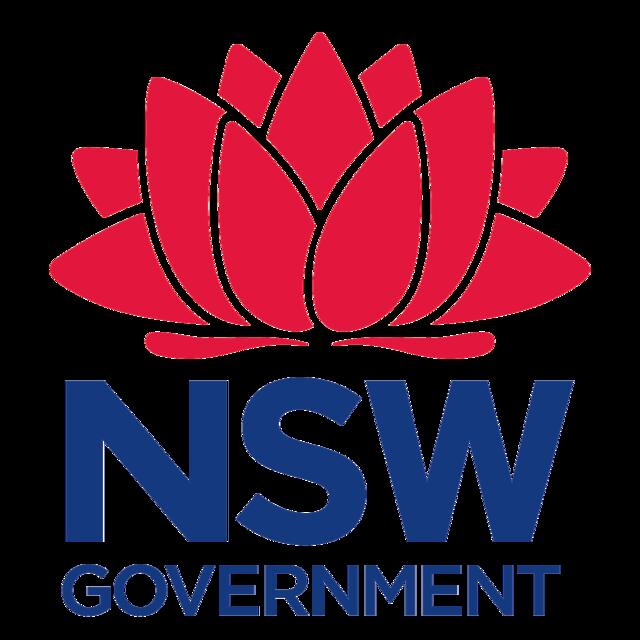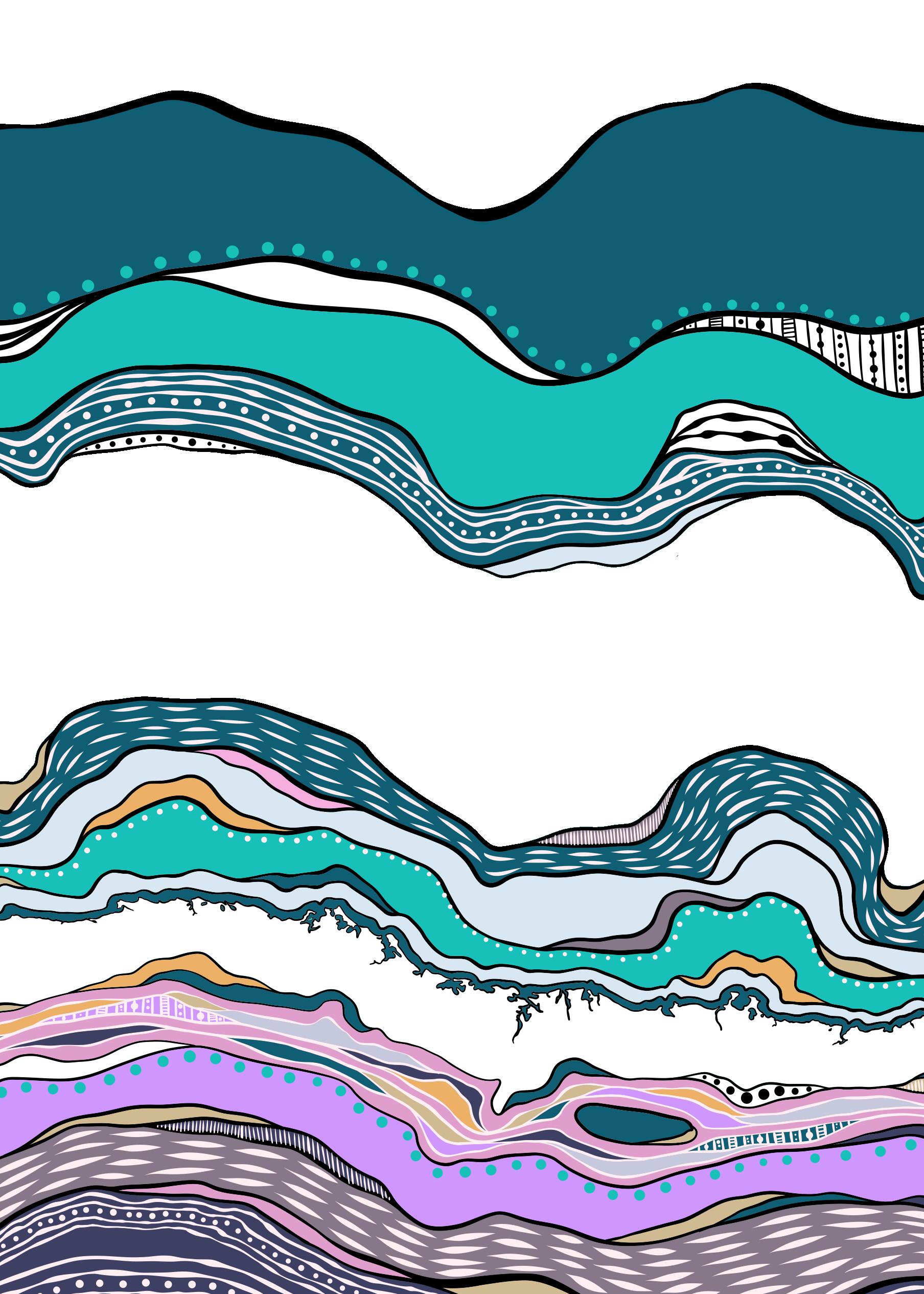
Bidhiinja is a Dharawal language word for the oyster.
The plight of oyster reefs has been nearly invisible. The NSW Department of Primary Industries (DPI) and the Australian National Maritime Museum have joined forces to share the stories of these reefs and DPI’s efforts with project partners to restore them.
Yuin Country. Footage by Craig Bender
Acknowledgement of Country
The Museum acknowledges the Gadigal people of the Eora nation as the Traditional Custodians of the bamal (earth) and badu (waters) on which the museum is located and all Aboriginal and Torres Strait Islander peoples throughout Australia.
We honour their continuing culture and connection to land and sea. We pay our respects to their Elders past and present, we extend that respect and recognition to all First Nations peoples.
(bamal and badu are words from the Eora language of the Sydney region and are supplied courtesy of the Metropolitan Local Aboriginal Land Council)
Our coastlines have not always looked the way they do today. Oyster reefs were once a dominant part of our seascape. Globally, it is estimated that 85%1 of shellfish reefs have been lost – more than any other type of marine habitat. Oyster reefs are a complex ecosystem and home to over 300 marine animals, such as shrimp, crabs, clams, snails, worms and many fish species.
No one alive today in Australia has seen the once-great expanse of thriving reefs. More than 99%1 of our oyster reefs are now considered ‘functionally extinct’ – devastated by a combination of overfishing, habitat destruction, catchment clearing and water-quality degradation, land reclamation and disease. Without established wild oyster reefs, the water is dirtier, fish and crustaceans leave or die off, and shorelines are less stable.
- Beck et al, 2011, Oyster Reefs at Risk and Recommendations for Conservation, Restoration, and Management; http://dx.doi.org/10.1525/bio.2011.61.2.5

The NSW Oyster Reef Restoration Project, led by NSW DPI, helps to reintroduce oyster reef habitats to the state’s estuaries and the community and to share the story of their rich history, important cultural value and significant benefits to local communities and estuaries. Small wild oyster populations still exist, but most were overharvested during the early colonial period. Oysters were a familiar and welcome food source for the European colonists, but the unregulated, indiscriminate harvest resulted in the removal of all sizes of oysters to supply the colonists’ voracious appetite.
Oysters didn’t only provide important sustenance for the colony. The colonists quickly realised that the extensive Aboriginal shell middens and the abundance of living oyster reefs could provide a source of lime for construction, to support the expanding colony. Aboriginal shell middens were plundered, whole living reef systems broken up, often by convict shell gangs, and shipped off to central lime kilns in Sydney. Temporary kilns, constructed right on the riverbank, were used if local needs dictated. The lime created from the burnt shells and consolidated oyster reef was used for lime mortar – forming the foundations of the early colony.
Catastrophic outbreaks of oyster pests and disease affected the populations that remained. The once extensive natural oyster reef system collapsed and has shown few signs of recovery.
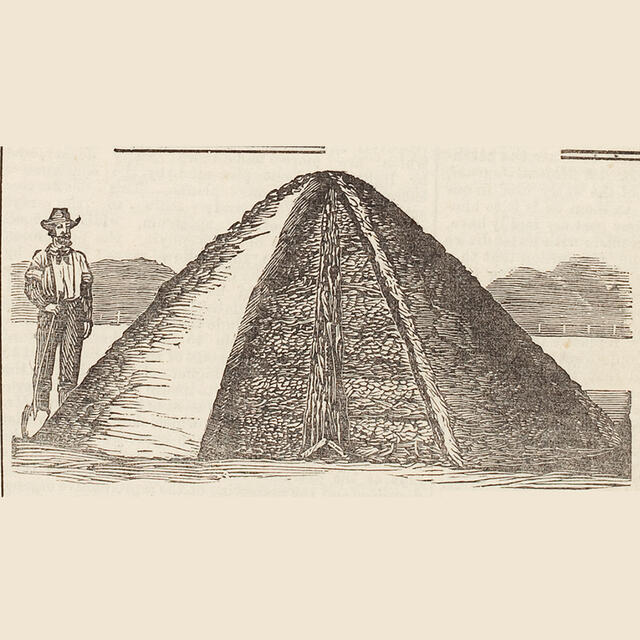
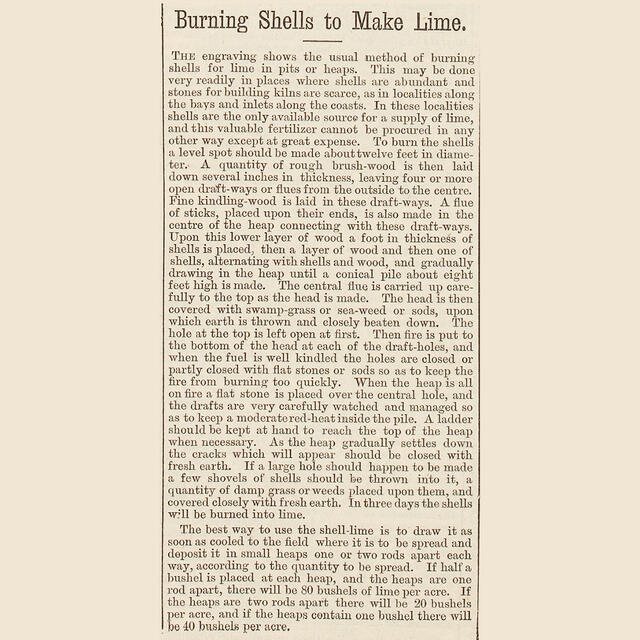

In 2019, NSW Department of Primary Industries initiated a landmark project to restore reefs in Port Stephens, which once had an abundance of natural oyster reefs. Stage 2 was completed the following year in collaboration with The Nature Conservancy and the Australian Government’s Reef Builder initiative. Nearly 11 soccer pitches of Sydney Rock Oyster (Saccostrea glomerata) reef were created, which 34 million oysters have established on. Just a few years later, this project is showing signs of success, currently filtering 9 million litres, or three and a half Olympic swimming pools, of water an hour, and supporting increased numbers of fish and invertebrates.
In recent years, the Department has diversified restoration efforts to include another reef-forming oyster species. The Wagonga Inlet Living Shoreline (WILS) project is an ambitious innovative nature-based solution for mitigating foreshore erosion at Wagonga Inlet, Narooma. Combining environmental, engineering and community elements, interwoven with Aboriginal culture, WILS brings together the restoration of an intertidal Sydney Rock Oyster reef with a subtidal Native Flat Oyster (Ostrea angasi) reef, for the first time in Australia, coupled with revival of saltmarsh and riparian vegetation communities. WILS is delivered in collaboration with Eurobodalla Shire Council, The Nature Conservancy and the Australian Government.
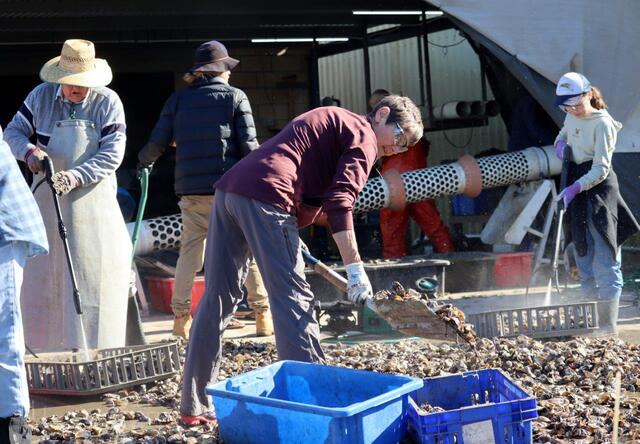


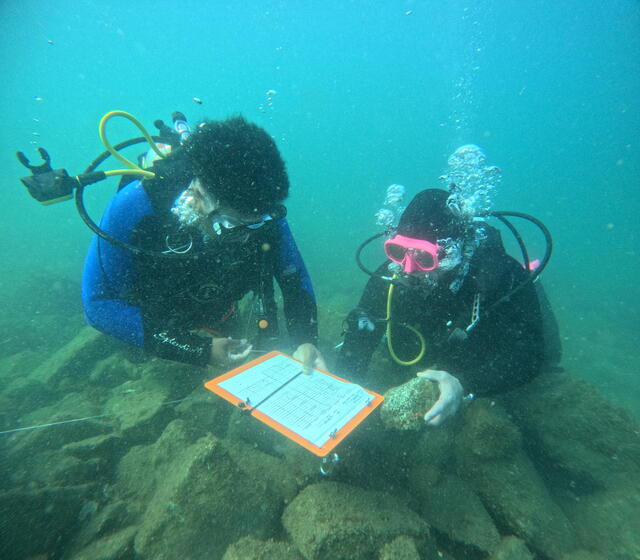

What does a healthy reef sound like?
Baby oysters (spat), even without a brain, still know where they would like to call home. The crackling sounds made by snapping shrimp can be ‘heard’ by spat and entice them to travel and settle on a particular reef. They use fine hairs called cilia to swim through the water column towards their destination.
Snapping shrimp live on reefs. To help them capture prey, they aim a jet of water from their large claws at their prey to stun them. To a shrimp, this generates a loud snapping sound that can exceed 210 decibels, but to humans it sounds like a tiny crackle. When snapping shrimp aggregate, their collective claws sound like bacon crackling in a frying pan. Tests were done by the University of Adelaide with AusOcean using underwater speakers to entice baby oysters to targeted spots. The tests were successful, and this method can be used to draw spat towards oyster reef regeneration sites, helping nature get back to its former glory.
Snapping Shrimp audio provided by Brittany Williams, PhD Candidate, University of Adelaide
DPI researchers and Joonga divers monitoring the subtidal Native Flat Oyster reefs in the Deep Hole.
Drone footage R.Laird NSW DPI
MEGAN COPE
Kinyingarra Guwinyanba
Kinyingarra Guwinyanba (which means ‘place of oyster rocks’ in Jandai and Gowar language) is a hand-built sculptural formation using empty oyster shells in a living artwork resting on the intertidal zone near Myora. The artwork is based in Quandamooka Sea Country, also known as Minjerribah (North Stradbroke Island), where artist Megan Cope is from. There is evidence of Quandamooka people creating middens from 20,000 years ago and cultivating oyster reefs as part of an aquaculture system.
Where there are middens, there were historical healthy ocean reefs which became vulnerable areas for the early colonial lime burning industry. Cope concluded six years of research into the industry and its devastating impacts on the middens and oyster reefs in Quandamooka Sea Country by creating this artwork. Kinyingarra Guwinyanba are ‘living’ sculptures for the future. They are planted in the sea for new oyster reefs to grow on to. Cope aims to build on the legacy of her ancestors that was interrupted by colonisation. From the process of planting these sea gardens, a new generation will rise from the mud and rocks and Kinyingarra shell.
‘Kinyingarra Guwinyanba is a living, generative land and sea artwork that demonstrates how art can physically heal country that has been colonised through the practice of ecologically restorative and ancestral processes.’
– Megan Cope
The work Kinyingarra Guwinyanba was created with funding support from Create NSW and the Copyright Agency Cultural Fund.
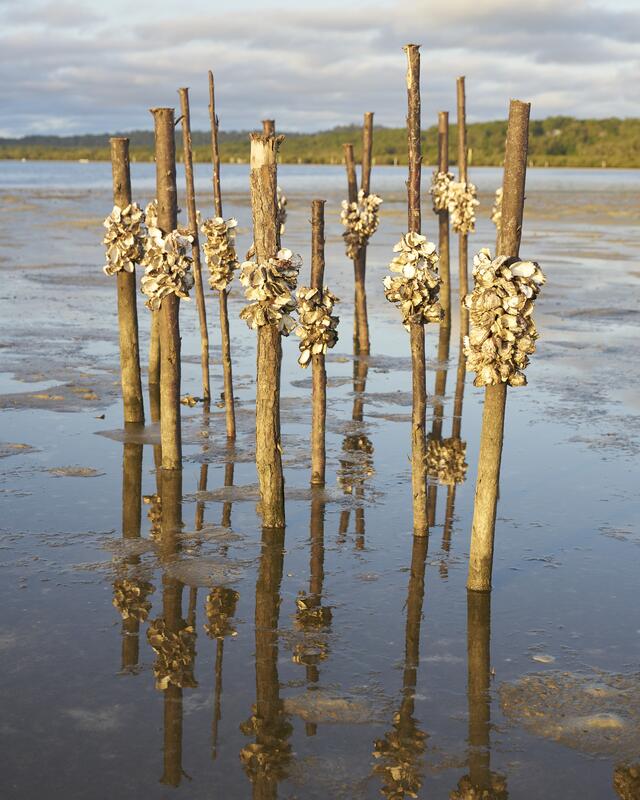
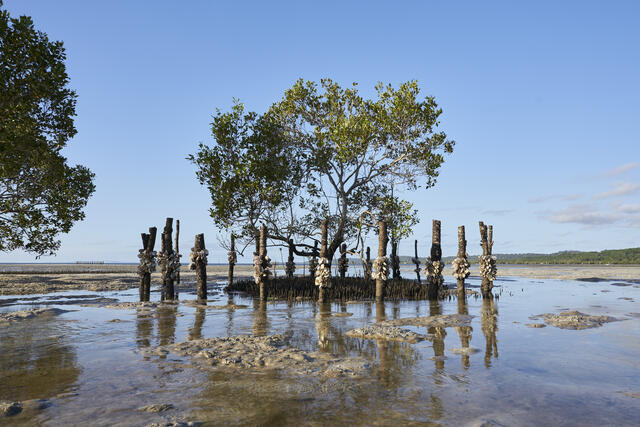
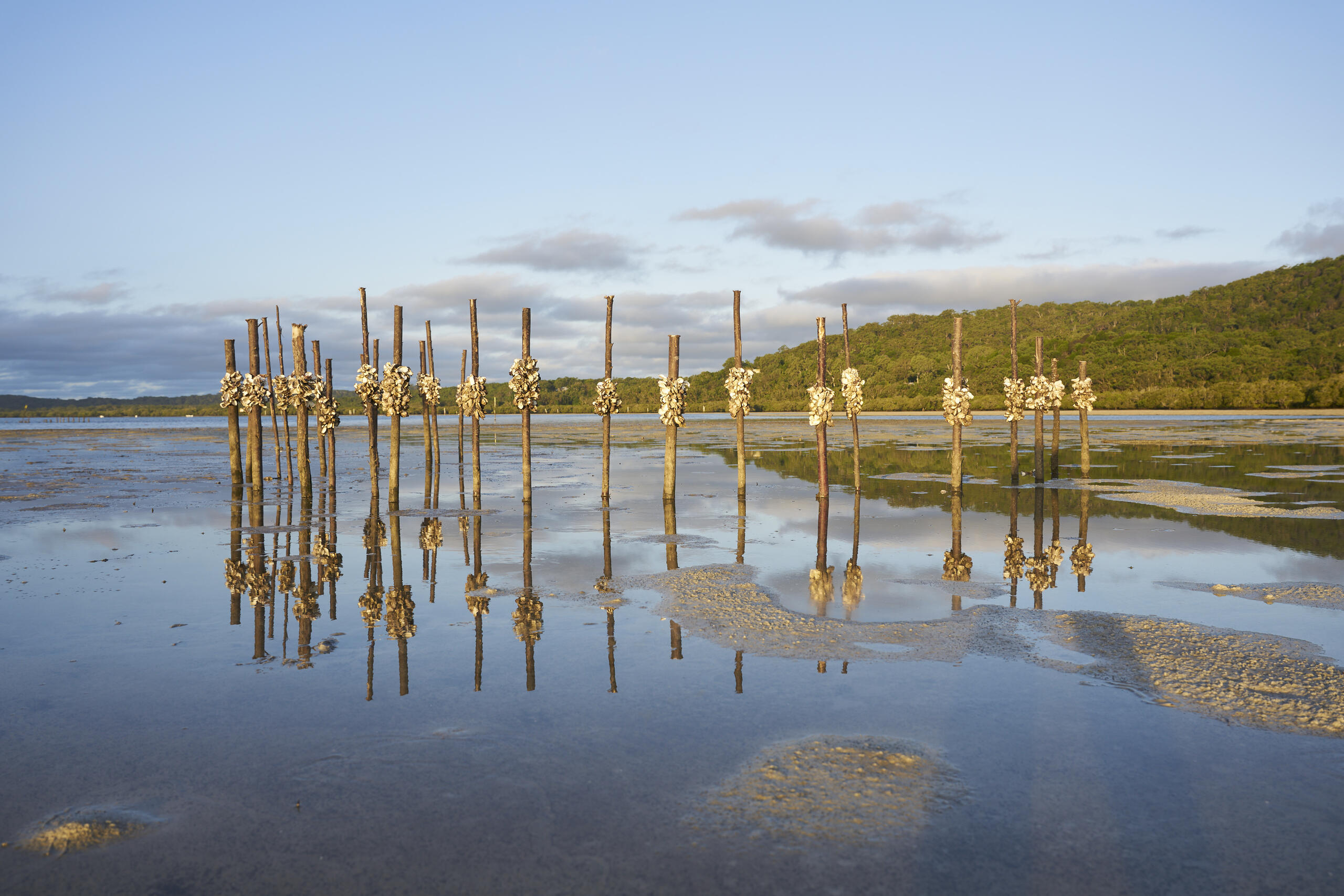
Kinyingarra Guwinyanba, 2022. Burogari (cypress pine), Kinyinyarra (Sydney Rock Oyster) shell and stainless-steel trace wire.
Cian Sanders. Courtesy of the artist and Milani Gallery, Brisbane.
ELLA WILLIAMS
Biomaterials are an innovative field of design aiming to move away from petroleum-based materials that are used to create plastic products. They give new light to often overlooked produce, waste and offcuts that can be repurposed or combined with other materials to create products with the same strength, durability and aesthetics as their plastic counterparts. Unfortunately, new materials and methods are hard to transition into a scaled commercialised product, with limitations on procurement, processing of raw materials and customised infrastructure for manufacturing. As Ella Williams notes, ‘current production of these biomaterials is largely limited to craft based and small batch techniques of furniture and home wares’.
As a product design student, Ella created a 3D printable biomaterial for her graduate project at the University of Sydney called ‘Waste Matters: Developing a 3D printable biomaterial from waste’. The project harnesses the scalability, low economic risk and geographically localised nature of 3D printing to demonstrate a viable and innovative way of using biomaterials for the future. The biomaterial is made from Sydney rock oyster shells sourced from nearby fish shops that ordinarily throw them away. The use of this inedible food waste represents an application of circular economy theory, in which the by-products of one industry become valuable resources for another. The oyster shells are combined with agar and reinforced with natural hemp fibres, creating a speckled, clay-like material.

Ella Williams
Process of making the material; ground oyster shells are combined with agar and pushed through a sieve to create a smooth, printable material. Hemp fibres are also added, more than doubling the strength. Pictures courtesy of Ella Williams.
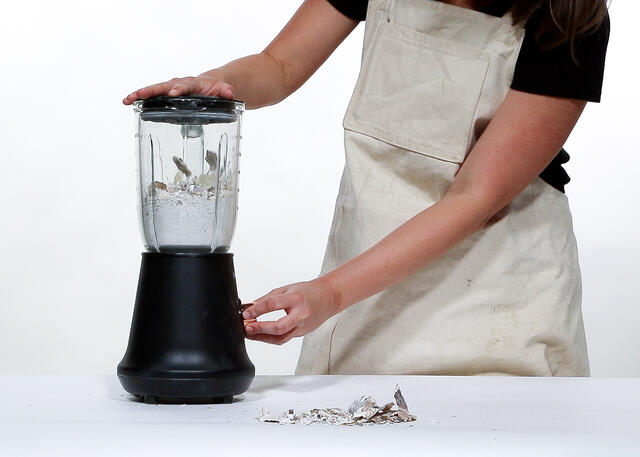
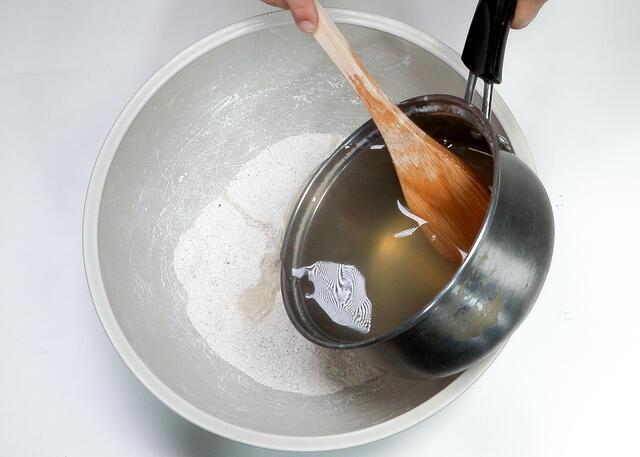
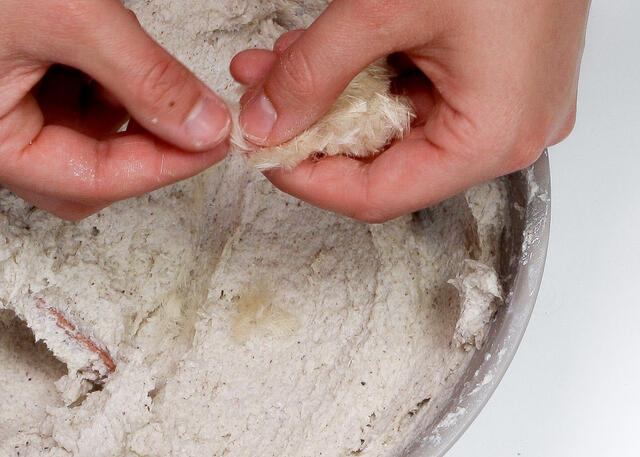
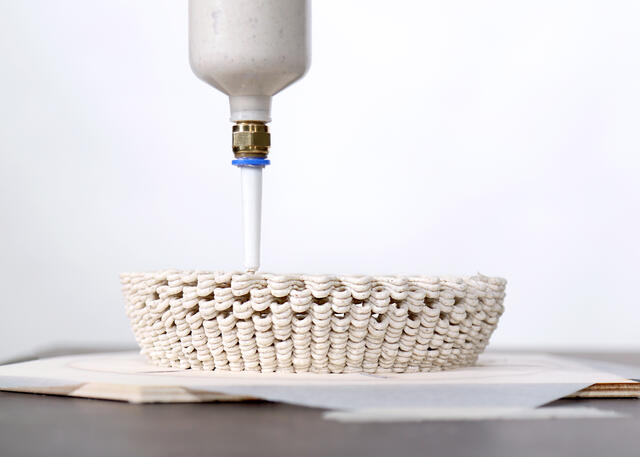
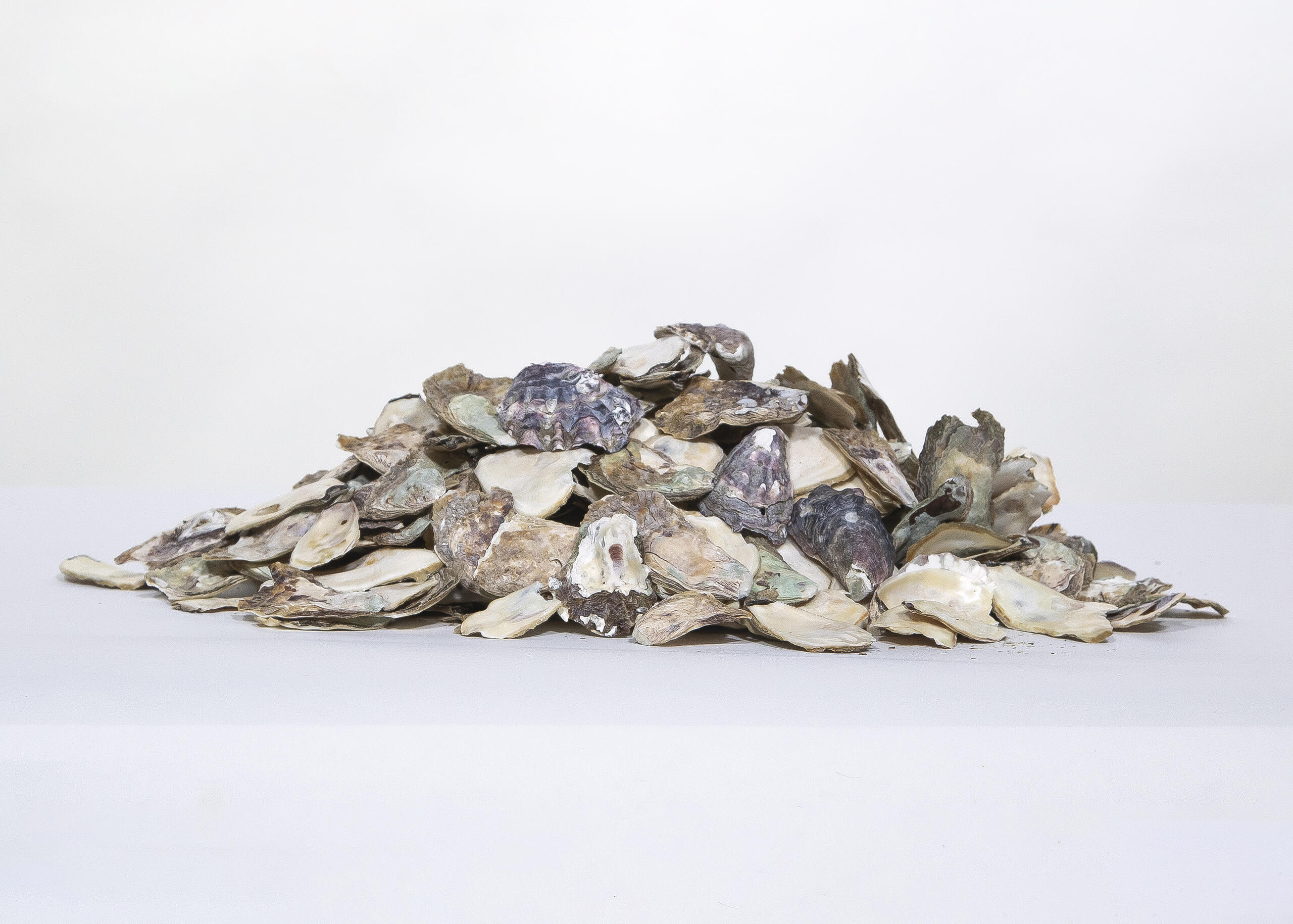
Picture courtesy of Ella Williams.
FRANCES BELLE PARKER
Frances Belle Parker is a proud Yaegl woman, mother and artist from Maclean, northern NSW. Her works lean into the strength and power of water and Indigenous peoples. Parker is the exhibition artist for Bidhiinja, in which she has used colours reminiscent of the those found in the sea and created a ‘map’ of the Australian coast. Her symbols, shades and shapes speak to the complexity of the oyster, but also our coastlines and seas.
‘I am inspired by the Yaegl landscape and those stories which were shared with me and passed down from our old people, it is my responsibility to document these stories and to map our landscape, in doing so I am making a valuable resource for my children and all of the younger Yaegl mob.’
– Frances Belle Parker.
Parker has a theme of oysters across her art practice, with artworks like Mun.gal and Northern Beaches Coastal Walk sculptures as a source of inspiration for the Bidhiinja exhibition artwork. These oyster-based artworks are founded on the vital role oyster reefs play as filters in our marine ecosystem, their longtime use as sustenance for Aboriginal communities and their use in middens across Australia, especially for the Yaegl community. Similar to Mun.gal, the exhibition has ‘patterned layers that represent the sheen and natural beauty of an oyster shell as well as the intricacies and folds of the mollusc itself,’ says Parker.
‘This artwork serves as a reminder of the importance of preserving and protecting the delicate balance of our environment, and the significance of maintaining our cultural traditions and practices.’
– Frances Belle Parker
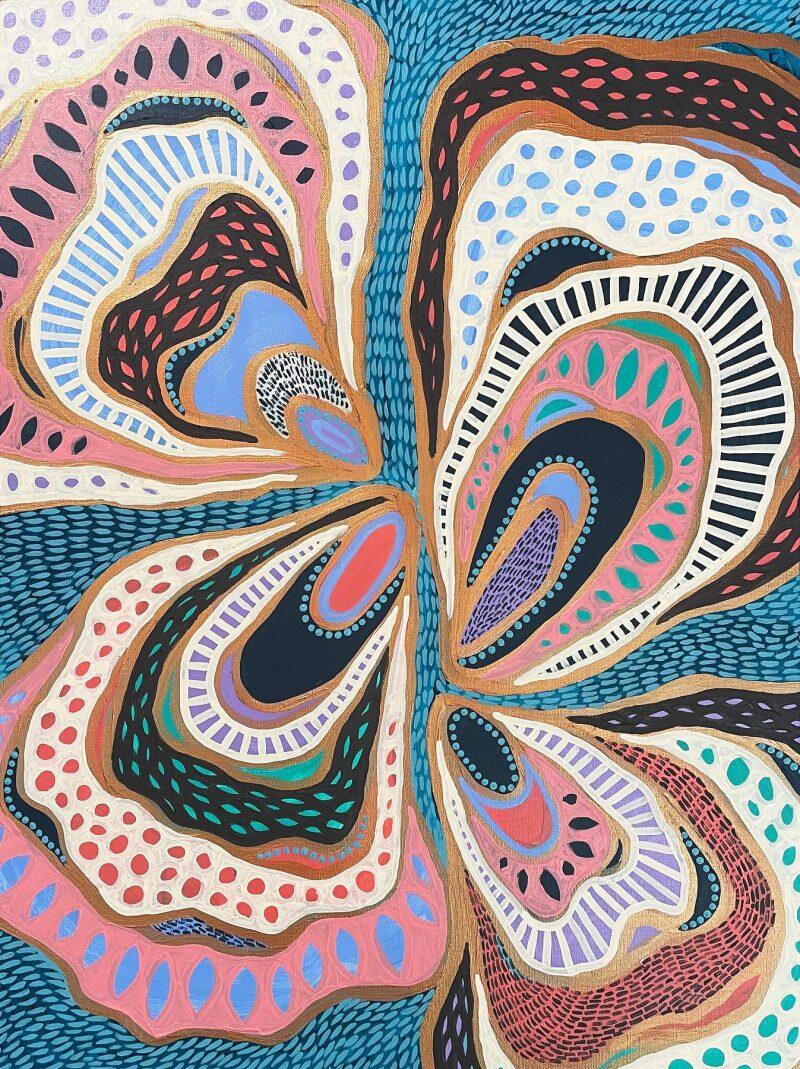
‘Mun.gal’ by Frances Belle Parker (Yaegl) 2023, acrylic on linen.
Northern Beaches Coastal Walk, Aboriginal Art and Storytelling, Narabeen Lagoon, NSW, 2022.
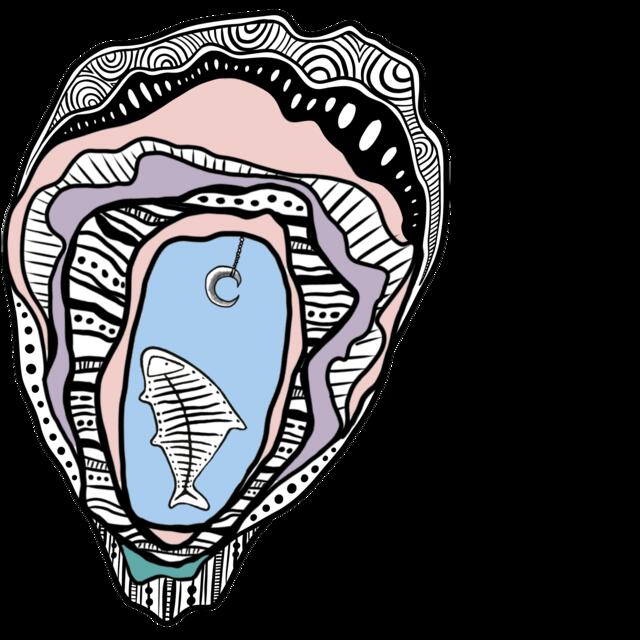
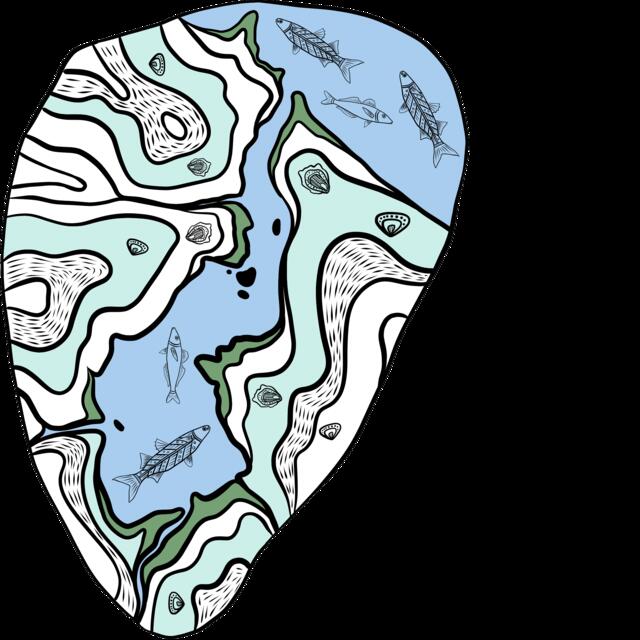

Acknowledgement
This exciting collaboration between the NSW Department of Primary Industries and the Australian National Maritime Museum is proudly funded by the NSW Government through the Marine Estate Management Strategy, which aims to deliver a healthy coast and sea, managed for the greatest wellbeing of the community, now and into the future.
